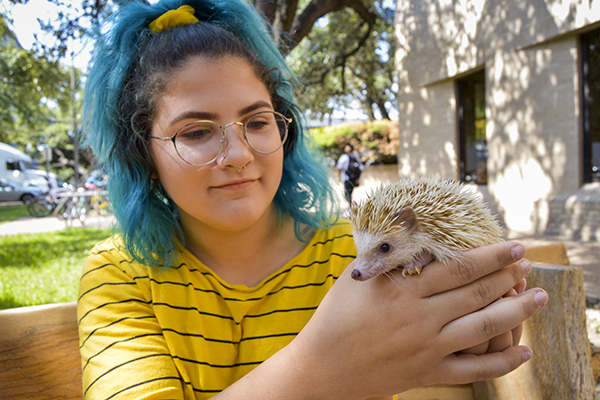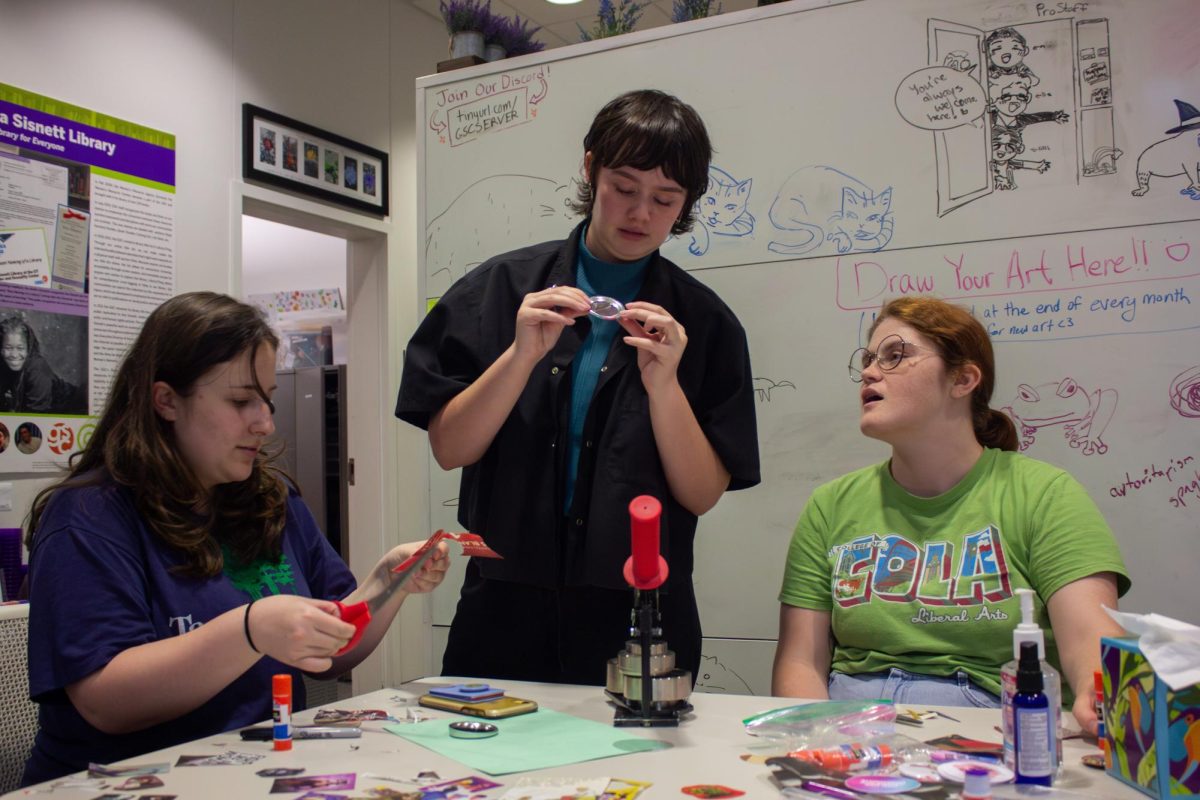To help with the stress that comes with college, many students find comfort in their furry, friendly and sometimes prickly friends.
According to the Washington Examiner, the number of college students in the United States who have requested to register emotional support animals has increased substantially within the past few years and continues to grow.
When thinking of service pets, dogs are usually the first animal to come to mind. However, neuroscience junior Sydney Morlock registered her pet hedgehog Penelope as an emotional support animal two years ago, and said she has loved every moment of it.
“I was nervous about going to college,” Morlock said. “An easy way to break the ice was to bring (Penelope) to social events with me because I would talk about her. She kind of helped with that barrier of anxiety when meeting new people.”
In 2018, a study conducted by the American College Health Association revealed that 63.4% of college students surveyed had experienced intense anxiety within the past year. Another 41.9% said it was hard to function because they were depressed.
Morlock said that when school gets difficult, Penelope serves as the perfect distraction to help her later re-engage on her work, sometimes even bringing Penelope with her to class.
“(Penelope) usually sits on my desk when I’m doing homework or working on a project,” Morlock said. “I’ll take a break from school to take care of her or take a moment to play with her and it helps me refocus later.”
Outside of college students, pet therapy has grown in other areas, becoming a common practice in many hospitals for sick or injured patients. According to PetMD, therapy pets have proven to be great helpers for patients, as well as an opportunity for general research on pet therapy.
Kim Stephens, director of Child Life and Expressive Therapies at Dell Medical, said through their Woody Pet Assisted Therapy program, many patients — particularly children — have greatly benefited from the company of therapy dogs at the hospital.
“It may just be a patient that is anxious and we’re just trying to provide some distraction and reduce anxiety,” Stephens said. “There are so many validated studies that show a reduction in both pain and anxiety and just improving (patients’) general mood.”
Stephens said bringing therapy pets to the hospital has also helped patients feel more comfortable living in new or unfamiliar settings.
“A lot of times the patients who are interested in pet therapy have a pet at home, so it gives an opportunity to normalize the hospital experience,” Stephens said.
While it might be helpful for some students, Morlock said she encourages students to register their pets as emotional support animals only if they feel it would be beneficial and affordable, whether it be a dog, goldfish or even a hedgehog.
“Penelope is an unusual pet and I am an unusual person,” Morlock said. “She has helped me a lot over the past few years here.”





















